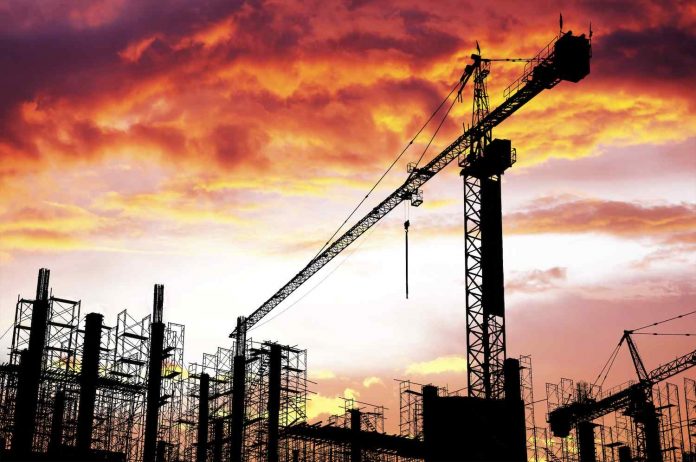ASSOCHAM report says that India will need more than Rs 31lakh crore in the next five years to suitably address its infrastructure needs i.eRs 17 crore a day. It will be partly from Government and partly from industry. Money is not the constraint. Intent and bottleneck in execution is the problem.
Infrastructure is the basic requirement for the growth and development of a nation. Core infrastructure provides facilities for various sectors to grow up. Construction of ports, airports, roads and power projects lead to growth of industry and service sector. Establishment of warehouses and cold storages will boost agricultural production and processing. Similarly education and healthcare sector needs huge investment for providing quality service. Thus infrastructure is the prime and foremost requirement for economic and social development. Infrastructure has a multiplier effect in the economy, more than 20 times. ASSOCHAM report says that India will need more than Rs 31lakh crore in the next five years to suitably address its infrastructure needs i.eRs 17 crore a day. It will be partly from Government and partly from industry. Money is not the constraint. Intent and bottleneck in execution is the problem.
Odisha is a growing state, the Gross Domestic Product of which is expected to rise at an average of 8.1% in between 2015-20, as per the report of planning Commission of India. In recent years, the state has witnessed structural shift from agrarian economy to an industry and service led economy.Share of industry and service sector combined has increased form 76.5% in 2005 to 84.4% in 2014. Manufacturing sector accounts for 16.2% whereas agriculture sector contributes around 16%. In 2014, Servicesectorhas grown at 8.6% whereas agriculturehas negative growth of 3.3% on year-to-year basis. Service sector grew by 9.2% from 2007-2014 led by sustained growth in transportation, communication and trade. The expansion of construction, trade, hotels & restaurants, communication and banking sub-segments are responsible in making Odisha a service sector led economy in terms of income and employment generation. The future growth expansion will be driven by industry and service. Industry will be focused around mineral and other resources as it occupies an important place in mineral deposits and production in India.
Power
Power is one of the prime movers of economic development. The level of availability and accessibility of affordable and quality power indicate quality of life of people. Odisha is the first state in the country who initiated power sector reform in the state during 1995. The present power generation capacity of the state (2013-14) is given below.
Hydro power generation 2085 MW
Thermal power stations 1486 MW
Central allocation 1184 MW
Renewable energy 90 MW
Total 4845 MW
OPGC is implementing expansion of adding two more units of combined capacity of 1320 MW during 12th plan period with an estimated cost of about Rs 11547 crore. GRIDCO has already executed power purchase agreement with 29 nos of IPP, NTPC and OPGC for procuring additional 11370 MW power. It is expected that Odisha will turn into a power surplus state by 2015-16.
In transmission and distribution area Odisha has taken various productive steps in last few years. Government of Odisha have decided to install 550 nos of new 33/11 KV sub-station in different blocks for strengthening of distribution system, reduction of T&D losses and to give quality power supply to consumers. The 1st phase work for Rs 200 crore is in progress. Government has also decided to install separate dedicated agriculture feeder for supply of power to agriculture sector. Some agricultural clusters have been identified and work is taken up by OPTCL. Present peak load demand for the state is around 5000 Kw and the power supply shortage will be recovered during 2015-16.Transmission and Distribution loss has been continuously reducing but at a slower rate. It has come below 40% now whereas all India average is 24%. State has to seriously do more in this regard.
Despite various constraints, the power sector in Odisha has achieved a commendable success when compared with other states. The per capita electricity consumption in Odisha is 1146 Kwh as against all India average of 884 Kwh. Odisha has to go for more industrialization for improving its economy and to provide employment. Major industries will go for their own captive production. But for massive MSE revolution Government should think seriously.
Roads
Road communication of a nation is just like the blood circulation system of a human body. It accelerates the economic as well as social development process by facilitating the logistical and supply chain side of any business or development input. Roads can be categorized into national highway, state highway, rural roads etc. Odisha being a rich state in minerals and metals needs a strong transportation infrastructure. The status of roads in Orissa vis-à-vis India is cited below:
| Sl. Nos. | Type of Roads | Road length in Kilometers | ||
| Odisha | India | |||
| 1 | National Highway | 3,704 | 76,718 | |
| 2 | State Highway | 3,654 | 1,64,360 | |
| 3 | Other PWD roads | 11,376 | 10,22,287 | |
| 4 | Rural roads | 1,94,151 | 19,38,220 | |
| 5 | Urban roads | 19,042 | 4,64,294 | |
| 6 | Project roads | 22,781 | 2,99,415 | |
Road density in Odisha (km/sq km) is 1.63 whereas in India it comes to 1.48. Odisha has a share of 4.82% of road length in National highways whereas it contributes 2.7% to the GDP of India. In last few years, Odisha has significantly expanded rural roads and project roads which will help in social development in long run. The national highway in Odisha is skewed and mostly available in coastal belt. The western and southern part of the state is economically and industrially backward (except Jharsuguda and Sundergarh district). The dream project of Chief Minister of Odisha “Biju Expressway” economic corridor for 512 Km between Jagdalpur and Rourkela with a financial outlay of Rs 3200 Cr was inaugurated. This will definitely boost agriculture, trade & commerce and social development in these parts of the state.
Ports
Odisha, with a coast line of 482 Km, is the maritime gateway to China, Japan, Australia and south-Asian countries. The state has three operating ports at Paradeep, Gopalpur and Dhamara. Paradeep port is the largest and operating since long whereasGopalpur port has been in operation since 2007. Dhamara port commenced its commercial operation since 2011. Odisha has 13 more potential sites which can be developed to minor ports. Out of these, Government of Odisha has signed MOU for establishment of three ports at Kirtania, Astaranga and Chudamani. Apart from establishing new ports, Government should look into capacity utilization of existing ports and also see how these ports can be used as key drivers for industrial development also.Paradeep port has 109 million tonnes of cargo handling capacity which is the highest among all major ports of the country. But it handled only 68 million tonnes of material during 13-14. The port is in the process of modernizing and mechanizing and has an ambitious plan to increase its capacity to 237 million tons by 2020. Port infrastructure and allied facilities in Odisha had a considerable growth in recent years.
There are opportunities for many industries in the state and the well-established infrastructure acts like catalyst. The oil and gas sector is one of the emerging sectors particularly in storage, refining and petro-chemical. The state has taken steps for improving Bio-tech sector by establishing bio-tech farms in PPP mode. The state has become an educational hub and many national level higher educational institutes have come up. In health sector, there is tremendous development in private as well as in Government sector. Agro processing is a promising area where lots of opportunities are there. The introduction of Mudra bank created lot of motivation among youths for establishing small and Micro industries or services.
There are also grey areas which creates a negative effect towards industrialization of the state. With everything in place entrepreneurship is lacking. The bureaucracy and the political leadership should be more proactive and industry friendly. Banks and financial institutions need to be more lenient in disbursing funds. Moreover the Government machinery should be more service oriented so that investors would feel ease of operation in doing business in the state.











































